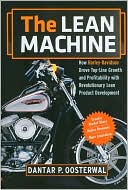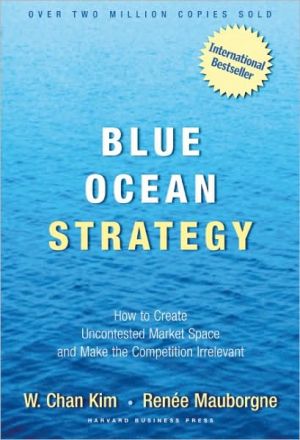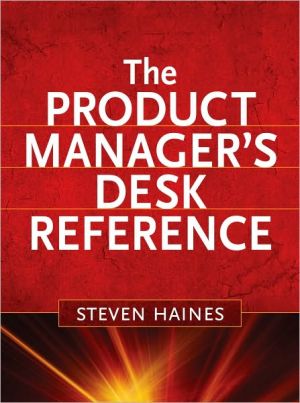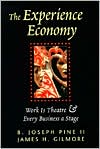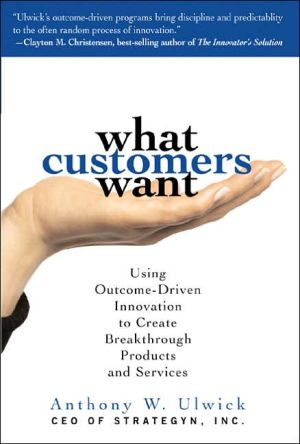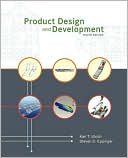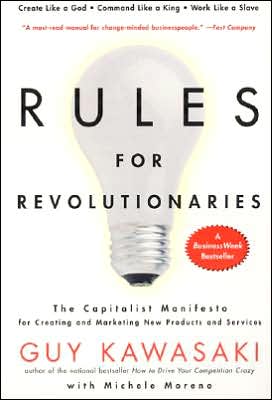The Lean Machine: How Harley-Davidson Drove Top-Line Growth and Profitability with Revolutionary Lean Product Development
Search in google:
“With a fresh American approach, based on the iconic giant, Harley Davidson, Dantar Oosterwal makes the whole new concept of lean new product design and development clear and doable. If new product design is the last frontier for competitive companies, The Lean Machine is the guidebook you will want to take with you on the journey.” — Patricia E. Moody, Fortune magazine, “Manufacturing Hero”; and author of The Big Squeeze, Powered by Honda, and The Incredible PaybackFrom near-extinction in the early eighties, the Harley-Davidson Company has risen to worldwide recognition for management excellence and innovation, and is a standout leader in the realm of product development. Part personal business journal, part big-picture analysis, and part step-by-step toolkit, The Lean Machine examines the groundbreaking application of lean manufacturing principles to product development at Harley-Davidson—a breakthrough that resulted in more products, faster cycles, and better quality, and that powered annual growth of more than 10 percent.Packed with little-known details about how the company came to reinvent the way it designs new products, and a broad overview of the fertile corporate climate that made it possible, The Lean Machine uncovers the power of Knowledge-Based Product Development to achieve predictable, positive results, without having to continually fix late-breaking problems and full-blown crises. It’s a formula for outstanding success that can be replicated or adapted to fit your own company’s needs.
Acknowledgments xiIntroduction xiii1 Working Hard 1Springtime in Paris 2The Concurrent Product Development Process 4A Reality Check 7Unexpected Competition 8Problems Late in the Development Process 102 The Harley-Davidson Environment 25Harley-Davidson Was Different 27Consensus Decision Making 30We Fulfill Dreams 30Lessons from the Dark Days 33The Circle Organization 36Consensus-Driven Organization 38Managing Conflict 39The Harley-Davidson Business Process 39Organizational Learning 413 Harley-Davidson's Product Development Leadership Learning Team 43The PDL T Journey 46Learning Organizations 474 The PD T 61Systems Thinking 64Learning to See the Product Development System 67Learningful Conversations 70Creating Shared Vision 755 Firefighting and the Tipping Point 80The MIT Connection 81Firefighting 82The Tipping Point 83Past the Tipping Point 84Lessons from Beyond the Brink 916 Cadence and Flow, Bins and Swirl 94The Outstanding Corporate innovator 97Product Development Flow 99Product Development Cadence 100The Application of Cadence and Flow 104Bins 107Heuristic Rules of Thumb 111The Innovation Swirl 1137 Supply and Demand 116The System Dynamics Model of the Motorcycle Business 122A Soft Landing by Reducing Shipments 126Generating Product Demand 126Developing New Products 1288 A Left Turn: Implementing Lean Principles in Product Development 131Don't Bring Lean Manufacturing Upstream 133The Roots of Knowledge-Based Product Development 136The Systems Approach to Flight 138Work Smarter, Not Harder 1439 The Product Development Limit Curve145Haste Makes Waste 147Bad Systems Beat Good People 150Design Rework Loops 152Product Development Is Predictable 15310 Integration Points and False Positive Feasibility 158False Positive Feasibility 162Design Cycles and Integration Points 16411 Learning Cycles 167The Learning Cycle 170Set-Based Product Development 17412 Set-Based Design 179A New Framework for Product Development 183The Second Piece of the Limit Curve Puzzle 18413 Leadership Learning and Pull Events 193The Leadership Learning Change Model 194Early Pull Events 199Creating Leverage Through Pull Events 20314 Quickening Product Development 206Railroad Planning versus Combat Planning 207Establishing and Using Help Chains 210Using Visual Management 21215 Oobeya 217Collaboration Using the Oobeya Process 217The Oobeya Process 221The Wall 226Quickening the Pace of Innovation 23016 Knowledge-Based Product Development 234Indications of Success 237Creating Change 241Notes 245Index 249
